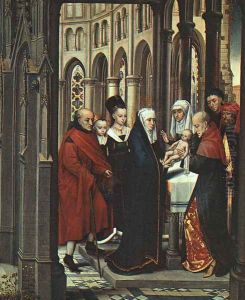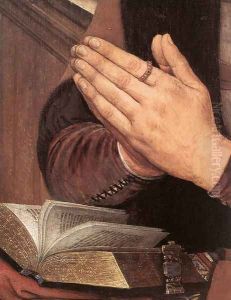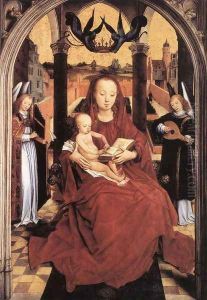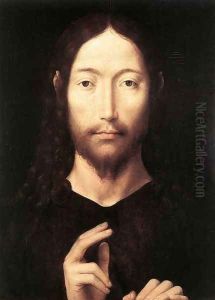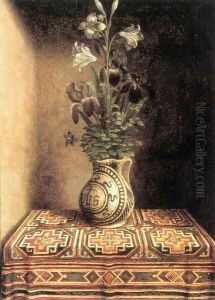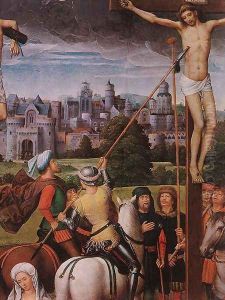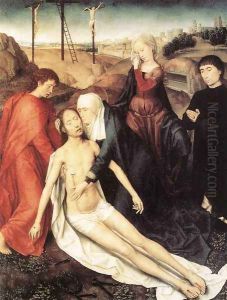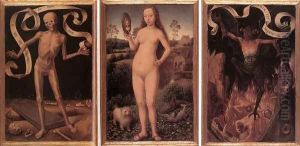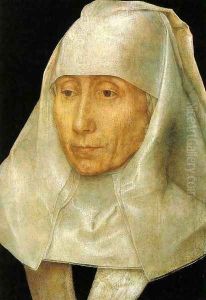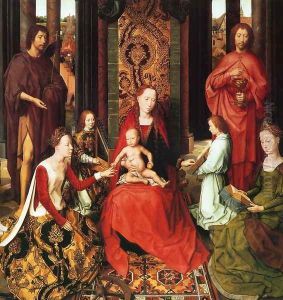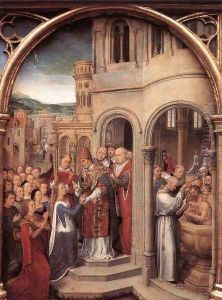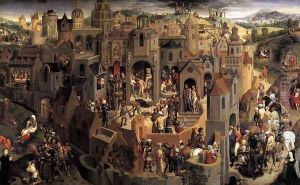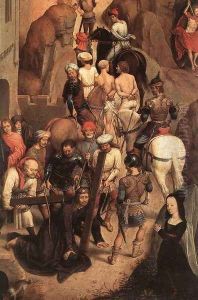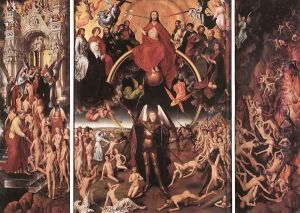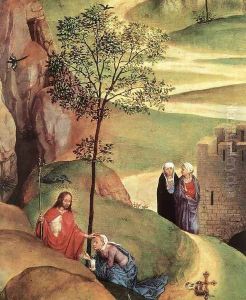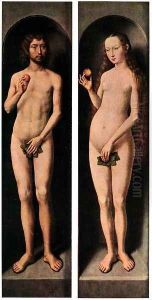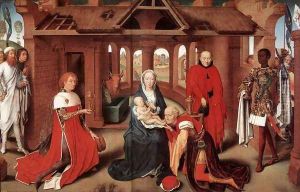Hans Memling Paintings
Hans Memling was a German painter who spent most of his active life in Bruges, Belgium, where he became one of the leading artists of the Flemish Renaissance. Born around 1430, likely in the region of the Middle Rhine in what is now Germany, Memling's early life remains somewhat obscure. However, it is known that he moved to the Netherlands and became a citizen of Bruges in 1465. Memling's work is characterized by its serene humanism, detailed portrayal of naturalistic landscapes and interiors, and the use of delicate colors. He was influenced by the works of Rogier van der Weyden, under whom he may have studied, and his art reflects a blend of Netherlandish realism with Italian Renaissance innovations. Memling was especially adept at portraiture and religious compositions, often integrating these elements into complex altarpieces. His most famous works include the 'Mystic Marriage of St. Catherine', the 'Diptych of Maarten van Nieuwenhove', and the 'Triptych of the Adoration of the Magi'. Memling's art was highly sought after during his lifetime, attracting patrons from the Burgundian court, wealthy merchants, and foreign dignitaries. He played a significant role in the development of the Flemish school of painting, influencing subsequent generations of artists. Hans Memling died in Bruges in 1494, leaving behind a legacy that would cement his place as one of the foremost painters of the early Northern Renaissance.




